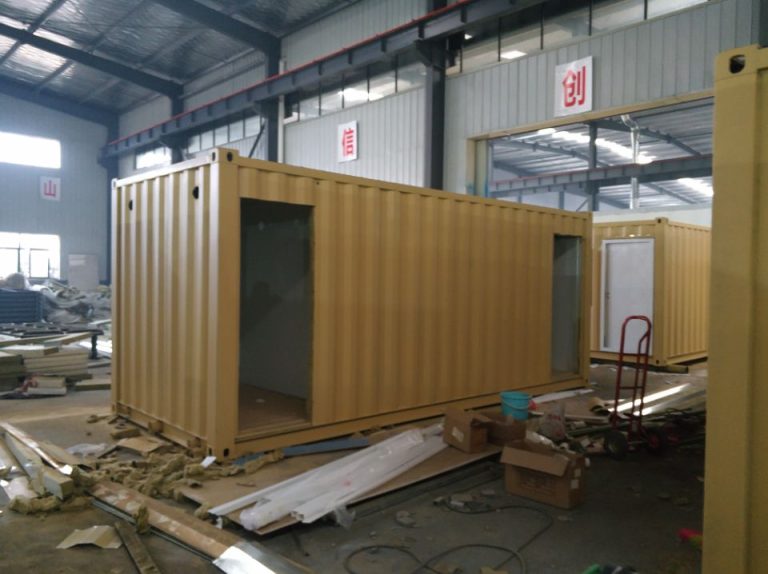The maturity of the steel structure industry in risk management and response measures
Table of Contents
Implementing Advanced Technology for Risk Assessment in the Steel Structure Industry
The steel structure industry has made significant strides in recent years when it comes to risk management and response measures. With the advancement of technology, companies in this sector are now able to implement more sophisticated tools for assessing and mitigating risks. This has not only improved the safety of workers and the general public but has also enhanced the overall efficiency and effectiveness of operations within the industry.
One of the key advancements in risk assessment within the steel structure industry is the use of advanced technology such as drones and sensors. Drones are now being used to conduct aerial inspections of structures, providing a comprehensive view of potential risks and vulnerabilities. Sensors, on the other hand, are being used to monitor the structural integrity of buildings in real-time, alerting operators to any potential issues before they escalate into major problems.
By leveraging these technologies, companies in the steel structure industry are able to identify and address risks more quickly and effectively than ever before. This proactive approach not only helps to prevent accidents and injuries but also minimizes downtime and costly repairs. In essence, the implementation of advanced technology for risk assessment has become a game-changer for the industry, allowing companies to stay ahead of potential threats and ensure the safety of their workers and the public.
In addition to risk assessment, the steel structure industry has also made significant progress in developing response measures to address potential risks. Companies now have detailed emergency response plans in place, outlining the steps to be taken in the event of a crisis. These plans are regularly reviewed and updated to ensure that they are effective and up-to-date.
Furthermore, companies are also investing in training programs for their employees to ensure that they are well-prepared to respond to emergencies. This includes conducting regular drills and simulations to test the effectiveness of response measures and identify areas for improvement. By taking a proactive approach to emergency preparedness, companies in the steel structure industry are better equipped to handle crises when they arise, minimizing the impact on both personnel and operations.
Overall, the maturity of the steel structure industry in risk management and response measures is a testament to the commitment of companies within the sector to prioritize safety and efficiency. By leveraging advanced technology for risk assessment and developing comprehensive response measures, companies are able to mitigate potential risks and ensure the safety of their workers and the public. Moving forward, it is essential that companies continue to invest in these areas to stay ahead of emerging threats and maintain their position as leaders in the industry.
Developing Comprehensive Emergency Response Plans for Steel Structure Failures
The steel structure industry has made significant strides in recent years in terms of risk management and response measures. With the increasing complexity and scale of steel structures being built, it has become imperative for companies to have comprehensive emergency response plans in place to mitigate potential risks and ensure the safety of workers and the public.
One of the key aspects of developing a comprehensive emergency response plan for steel structure failures is conducting a thorough risk assessment. This involves identifying potential hazards and vulnerabilities in the structure, as well as assessing the likelihood and potential impact of various failure scenarios. By understanding the risks associated with a steel structure, companies can develop targeted response measures to address these risks effectively.
In addition to risk assessment, companies must also consider the regulatory requirements and industry standards that govern the design, construction, and maintenance of steel structures. Compliance with these standards is essential for ensuring the structural integrity and safety of steel structures. By adhering to these regulations, companies can minimize the likelihood of structural failures and ensure that their emergency response plans are in line with best practices.
Another important aspect of developing a comprehensive emergency response plan for steel structure failures is establishing clear communication channels and protocols. In the event of a failure, it is crucial for all stakeholders, including employees, emergency responders, and the public, to be informed and coordinated effectively. By establishing communication protocols and conducting regular drills and training exercises, companies can ensure that everyone knows their roles and responsibilities in the event of an emergency.

Furthermore, companies must also consider the potential environmental and economic impacts of a steel structure failure. In addition to the immediate safety concerns, a failure can also result in environmental contamination, property damage, and financial losses. By incorporating measures to address these impacts into their emergency response plans, companies can minimize the long-term consequences of a failure and expedite the recovery process.
One of the key challenges in developing comprehensive emergency response plans for steel structure failures is the dynamic nature of the industry. As new technologies and materials are introduced, companies must continually update and refine their response measures to address emerging risks and vulnerabilities. By staying abreast of industry trends and best practices, companies can ensure that their emergency response plans remain effective and relevant in the face of evolving threats.
In conclusion, the maturity of the steel structure industry in risk management and response measures is a testament to the commitment of companies to prioritize safety and resilience in their operations. By conducting thorough risk assessments, complying with regulatory requirements, establishing clear communication channels, and addressing environmental and economic impacts, companies can develop comprehensive emergency response plans that are robust and effective. As the industry continues to evolve, it is essential for companies to remain proactive and vigilant in identifying and mitigating risks to ensure the safety and security of their structures and personnel.






